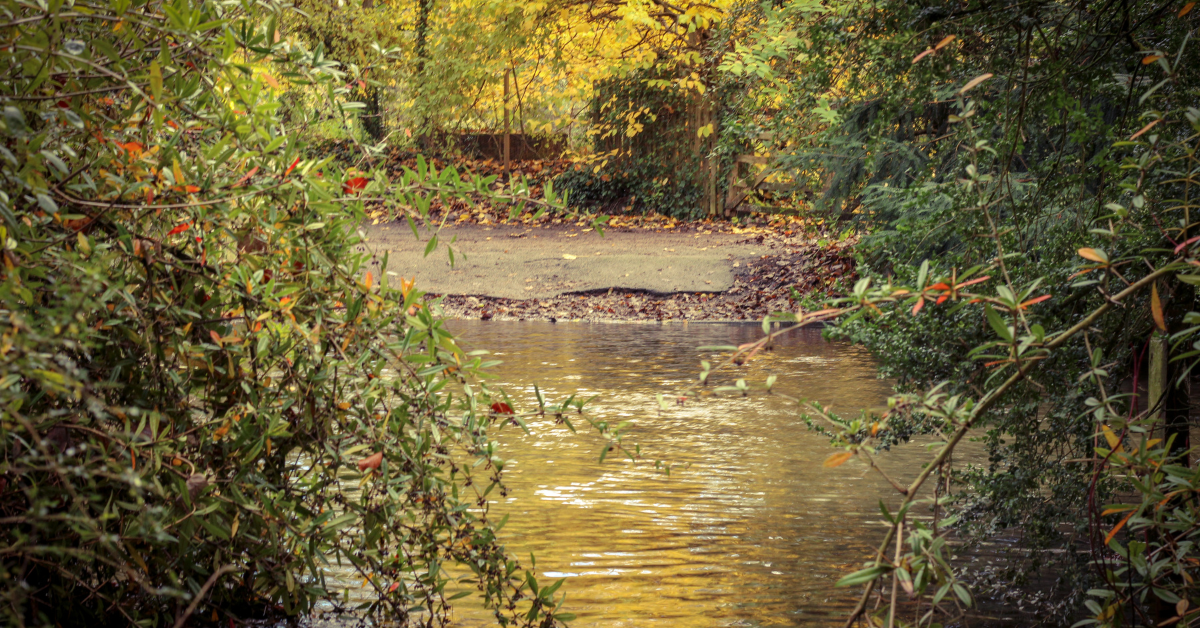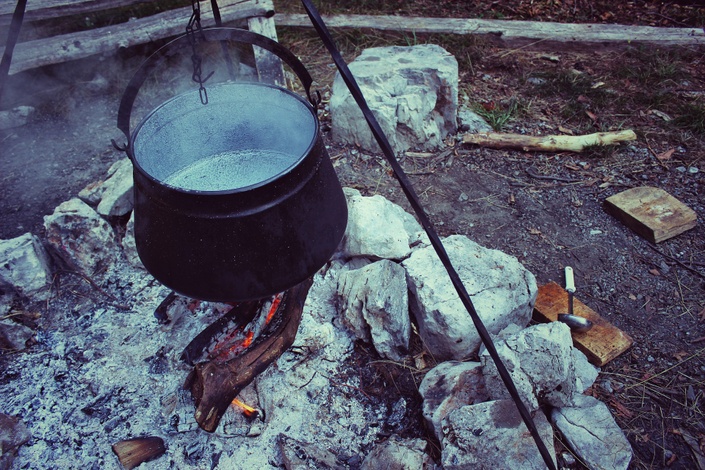Ceist: What is the Bed of the Couple? Ní Ansa…
Central to Ireland Mythological cycles is the arrival and conflicts of the Tuatha De Danann, the tribe who would become the Gods of Ireland. Of the two conflicts at the plain called Moytura, the second was less a battle for dominance and more a struggle for survival.
The Fomorians, ancient foes of the peoples of Ireland had come again. As the heroes and warriors prepared for the invasion, one noted by all as the ‘Good God’ who had sworn to fulfil the offered skills of all others, journeyed from that meeting of the men of the Goddess, across the island to seek greater insight to serve his people. So it is that the Dagda came to see the Morrigan at the Bed of the Couple.
✨ Post by Jon O’Sullivan
Knowing the Lore
There are many manuscripts which hold these stories of Ireland’s ancient past, and many versions of the same tale appear among them which gives us a variety of sources to consider and perspectives to explore.
Not so with the Cath Maige Tuired, which was recorded in only one manuscript known to academics as Harleian 5280. Here we find the story of the Bed of the Couple…
The Dagda had a house in Glenn Etin in the north.
The Dagdae had to meet a woman on a day, yearly, about Samhain of the battle at Glen Etin. The Unish of Connacht calls by the south. The woman was at the Unshin of Corand washing her genitals, one of her two feet at Allod Echae, that is Echuinech, by the water at the South, and her other at Loscondoib, by water at the North. Nine plaits of hair undone upon her head. The Dagda spoke to her and they made a union. Lying Down of the Married Couple’ was the name of that place from then. She is the Morrigan, the woman mentioned here.Afterwards she commanded the Dagda strip his land, that is Mag Scetne, against the Fomorians, and told the Dagda to call together the aes dana of Ireland to meet at the ford of the Unshen and she would got to Scetne and injure with magic the king of the Fomorians, that is Indech Mac De Domnann is his name, and she would take the blood of his heart and kidneys of the battle ardour from him. Because of that she would give the gathered hosts the blood in her two palms, striking, groaning, warlike by the Ford of Unshen. Ford of Utter Destruction was its name afterwards because of the magical injury done to the king.
Cath Maige Tuired: The Second Battle of Moytura, translated by Morgan Daimler
There are a number of elements to this section regarding its subjects that are worth exploring, but before we move on to those I find it’s worth noting the structure of this segment of the lore. Where other areas of the tale deal in the details of the interactions that lead up to and are resolved in the conflict, this section instead fits the form of something different.
In the Irish lore there are segments known as Dindshenchas, which means the lore of names and places. These other forms tend to be some of the oldest elements of the lore as it recalls the reason why a particular part of the landscape in Ireland carries its name.
Here we have not one naming but two, both tied to deeds performed by notable deities, and both linked to the same place. A place that is in between. A place that is not earth, nor water, but is in a way both.
Lying Down of the Married Couple
The Dagda and the Morrigan are a couple. This segment makes that abundantly clear, but what might not be understood from this is the nature of that coupling.
In other pantheons there are what some refer to as a ‘divine couple’. This is usually some pair of primary deities, usually built around a primogenitor, a first or father of the rest of the pantheon. Common examples of this are Odin in the Norse pantheon, or Zeus in the Greek.
In much of the lore of these other pantheons these ‘prime deities’ engage in other relationships and their partners are presented as contentious or even outright adversarial in the case of Hera.
This is not so in the case of the Irish Gods, but to add some weight to our inference we need only look to the old Irish Legal structure known as the Brehon Laws. Here we find that under these old laws of Ireland there were no less than eight forms of marriage, or union.
Many of these unions dealt with complexities between societal classes. There were even legally recognised unions that would last a year and a day, ending without prejudice, as well as a function for divorce should either party not live up to the agreements of the union.
The type of union that best fits the relationship between the Morrigan and the Dagda may best be considered as the Union of Equals. This type of coupling was usually found between two people of similar status and wealth which was considered equal.
The rights of each individual to autonomy were preserved in this union as neither part was more powerful or privileged than the other. Both were free to pursue their own agendas and even other relations as defined by their union and should there ever be grounds for divorce, each would leave with the wealth and status they brought into the union as well as 50% of everything generated during the coupling.
At no point in the lore as we currently understand it does either the Dagda or the Morrigan display dominance over the other in their interactions. This added to the information above leads me to believe that they share a marriage of equals.
The Caring within the Bed of the Couple
For all that we have many tales of the Dagda, and many of the Morrigan, beyond the above excerpt there are few tales of their direct interactions. Of course they share the same tales, appearing in connection to other events as they transpire, from battlefields to place names.
There are also many tantalising snippets of strange appearances of a ‘Red Man’ who accompanies the Morrigan in the Ulster cycle, or mentions of a “fair and ever youthful woman” whose ‘paps’ (breasts) are situated “to the west of the fairy mansion” that is Brú na Boinne. (That’s the Dindshnechas again.)
What this means of course is open to supposition. Maybe there is missing lore of the ancient times which deals more directly with these extremely powerful and influential deities, or maybe the absence of the lore is in itself an insight to the private nature of their relationship.
Though he ruled as king of Ireland for eighty years, and her name could be translated as the ‘Great Queen’ nowhere does it place them as ruling together.
Yet for all of the lands each owns or is associated with, we find reference to places kept for the spouse. From his house in Glenn Etin in Connacht not all that far from ‘her fit abode’ which is Oweynagat or the cave of the cats at Rathcroghan, to the ‘paps of the Morrigan’ near Brú na Boinne.
This could be seen as making and holding space for that relationship no matter where each spouse happens to find themselves, though of course others may read it differently.
A Hot Take on the Bed of the Couple
The last of many thoughts that I will share with you for your consideration is the question, why Indech?
In the excerpt above, the ford of the lying down of the couple is later renamed the ‘ford of destruction’. This is on account of the harming done upon the Fomorian king. Yet we know that there were many Fomorian kings who came in that invasion, not least of all being Bres who caused the whole conflict and none other than Balor himself, grandfather of Lugh and one of the greatest threats the Fomorians possessed on account of his baleful eye.
So why then was Indech the target against whom “she would take the blood of his heart and kidneys of the battle ardour from him“?
Here we must look to the Morrigan’s gifts as a Goddess of prophecy. As the Dagda went to her at the ford to seek knowledge of the landing site of the Fomorian, who is to say that she did not also see the harming that would befall him when he went among them?
Harming of poor hospitality, where he would sacrifice his body to consume the gruel the Fomorians served. Harming of violence where he was set upon and brutalised by the daughter of the Fomorian king. Harming of pride as he was forced to carry her on his naked body about Ireland and lastly harming of assault as he was compelled to couple with this unnamed king’s daughter.
Though we do not know her name, we do know her father’s… Indech Mac De Domnann.
There is no reason given to the Morrigan’s choice of target in the lore of the stories, but when we look again at this excerpt in context of that which follows it and the union it speaks to… well.
Maybe her choice becomes as obvious, as the caring that it implies exists within the Bed of the Couple.



